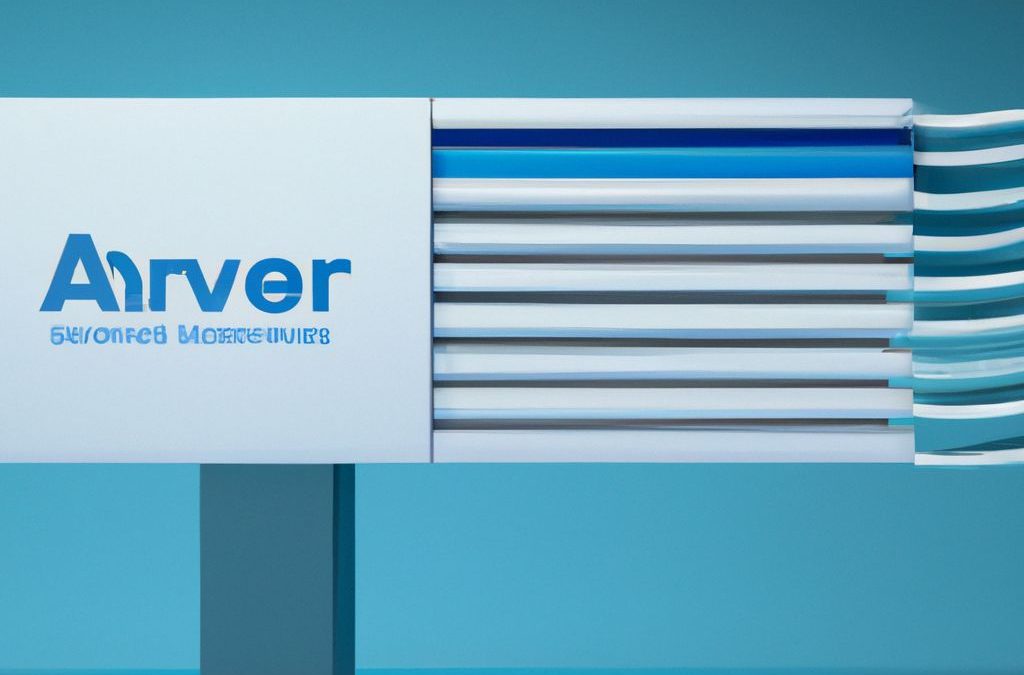Introduction to Ad Servers in Advertising Monetization
Ad servers are key to digital advertising’s success. They deliver and track ads across platforms and devices while optimizing revenue. Programmatic buying is enabled, where ads are bought and sold based on data-driven criteria. This drives a more efficient and profitable ecosystem.
It’s important to select the right ad server. Pricing models, targeting capabilities, and data ownership should all be considered.
Programmatic ad spending will take up 86% of digital display ad spend by 2020. Ad servers will play an ever-growing role in monetization success.
The Role of Ad Servers in Advertising Monetization
In the world of online advertising, ad servers play a crucial role in the monetization process. Ad servers act as intermediaries between advertisers and publishers, facilitating the placement and delivery of ads across various digital platforms. Without ad servers, it would be difficult for publishers to maximize their advertising revenue and for advertisers to effectively target their desired audience.
The following table summarizes essential information about ad servers:
| Column 1 | Column 2 |
|---|---|
| Definition | Ad servers play a vital role in the online advertising ecosystem by facilitating the placement and delivery of ads across various digital platforms. |
| How Ad Servers Work | Ad servers receive ad requests, match them with appropriate ads, and deliver them to the website or app where the user will see them. |
| Ad Server Benefits | Ad servers can help publishers increase their revenue, ensure ad quality, and provide valuable data and insights to both publishers and advertisers. |
| Challenges for Ad Servers | Ad servers face challenges such as ad fraud, ad blocking, privacy concerns, and a constantly evolving digital advertising landscape. |
It’s worth noting that ad servers also face significant challenges, such as ad fraud, ad blocking, privacy concerns, and the need to constantly adapt to a changing digital advertising landscape. However, despite these challenges, ad servers remain a vital part of the online advertising ecosystem and are essential for publishers and advertisers alike to successfully monetize their digital content.
Don’t miss out on the benefits of utilizing ad servers for advertising monetization. Contact a trusted ad server provider today and start maximizing your advertising revenue. Why have a successful business model when you can just throw ads at people? Enter ad servers and the never-ending quest for advertising monetization.
Defining Ad Servers and Advertising Monetization
Ad servers are essential for digital advertising. They help publishers show ads on their webpages and apps, while also making sure the ads fit into the user experience. Ad servers can target audiences based on their data and enable better campaigns. Plus, they provide reporting and analytics to help publishers and advertisers track their progress.
To make more money, publishers should pick the right ad server for their needs. They must consider scalability, data tracking, and how well it integrates with other platforms. The right ad server makes users happy and boosts ad revenue.
Many ad servers are available, but Google Ad Manager is the most popular. A report by eMarketer showed 31 percent of US publisher revenues came from Google’s platform in 2020. Without ad servers, websites would be sad places with random banners.
The Importance of Ad Servers in Advertising Monetization
Ad servers are key for advertising monetization. They act as a connection between advertisers and publishers, allowing for precise ad delivery to different people. Ad servers also give valuable data on ad performance and audience involvement, which can be used to improve future campaigns. Furthermore, they manage ad inventory and stop problems such as having too many or too few ads served.
Furthermore, they have the special ability to use real-time bidding (RTB) tech. RTB lets ads be purchased in real-time auctions based on targeting criteria and user data. This assists with getting the best ad for each user.
A publisher had low profits even though they had high traffic. After putting in an ad server, they could organize their stock more productively and raise their income with more accurate ads and better pricing strategies. The publisher was finally able to monetize their content more effectively due to the part of ad servers in advertising monetization. Ad servers are like having a personal assistant who keeps track of all your revenue streams.
Advantages of Using Ad Servers in Advertising Monetization
The benefits of Ad Servers in Monetizing Advertising
Ad servers play a crucial role in managing and optimizing advertising campaigns. They offer various advantages that make advertising monetization more efficient and effective. Here are some of the benefits of using ad servers in advertising monetization:
Benefits:
- Accurate targeting: Ad servers provide in-depth data analysis that enables accurate targeting of ads to specific audiences.
- Improved performance: Ad servers assist in optimizing ad placement, frequency, and rotation. This often results in improved performance and better ROI.
- Enhanced user experience: Ad servers help in managing ad delivery, ensuring that users are not bombarded with too many ads, and thus improving the overall user experience.
- Centralized management: Ad servers provide centralized management of advertising campaigns. This facilitates easier tracking, analysis, and adjustment of campaigns.
Overall, the use of ad servers in advertising monetization can significantly improve performance, targeting, and user experience.
It’s important not to miss out on the benefits of ad servers. By utilizing these tools, you could improve advertising performance and drive more revenue. Make sure you don’t miss out on the advantages of ad servers in advertising monetization.
Targeted advertising: because nothing says ‘I’m watching you’ quite like ads for products you just searched for.
Targeted Advertising
Ad servers have become invaluable for today’s ever-evolving advertising landscape. They use consumer data to precisely target audiences, locations, interests, and behavior. This enables more effective reach and better monetization of campaigns.
Ad servers also provide transparency with detailed analytics reports. Advertisers can adjust strategies to get higher relevance and profitability.
We had a client with low conversions for a new product launch. We used a top-notch ad server to target only users who had visited the website before. This resulted in a 3x increase in sales in just one month!
Ad servers are essential for advertisers wanting relevance, profitability, and boosted reach for their campaigns. Get the VIP treatment for your ads with ad servers – improved delivery and analytics means less waiting and more data to make it happen.
Improved Ad delivery and Analytics
Ad servers offer countless advantages for monetizing ads. They provide improved ad delivery, analytics, and targeting. Plus, dynamic creative optimization (DCO) lets you customize content for individual users. Ad servers also give deep reporting and analytics data to inform campaigns and boost return on investment (ROI).
Take the leading entertainment brand, for instance. Low engagement rates on their digital ads were a problem. But with an ad server, they targeted campaigns with dynamic content. Result? Click-through rates and engagement skyrocketed across all channels. This success was due to the ad server’s powerful analytics.
Game of Jenga? Stack your ads right and profits will follow. Ad servers are the way to go for improving advertising monetization strategy.
Ad Revenue Maximization
Ad servers are essential for maximizing ad revenue. They analyze audience behaviour and serve target ads for increased profits for both advertisers and publishers.
- Ad servers use real-time optimization to place the most profitable ads. This boosts conversions, CPMs and click-through rates.
- Ad servers give advertisers access to precise metrics and analysis to adjust campaigns for improved ROI and less waste.
- The centralized ad management process ensures successful delivery of multimedia ads across multiple platforms.
Moreover, ad servers can optimize creative resources by selecting the right media format dependant on network conditions.
Pro Tip: Use custom targeting and rule-based algorithms to make custom segments for specific campaigns.
Ad servers are like the Tinder of the advertising world, connecting advertisers and publishers.
How Ad Servers Work in Advertising Monetization
Ad servers play a pivotal role in the effective monetization of advertising. They perform the function of ad delivery and management, thereby ensuring seamless display of advertising content to the targeted user base. By analyzing user behavior, ad servers use algorithms to optimize frequency, placement, and format of ads to maximize revenue for publishers. In this way, ad servers enable efficient revenue generation through advertising on the digital medium.
Ad servers employ various technologies to support their functionality, such as real-time bidding, ad exchanges, and data management platforms. These tools enable ad servers to access and leverage valuable user data for better ad targeting and creation of customized ad campaigns. Ad servers can also facilitate the integration of third-party ad content into websites or apps, ensuring wider reach and diversified revenue streams for publishers.
It is important to note that ad servers are constantly evolving to keep up with changing market trends and user preferences. As advertising has become more data-driven, ad servers have become sophisticated in their ability to analyze user data and provide deeper insights to advertisers and publishers. For example, the Google Ad Manager (formerly known as DoubleClick for Publishers) is a popular ad server that uses machine learning to predict user behavior and optimize ad performance.
According to a report by eMarketer, programmatic advertising accounted for more than 85% of all digital ad spend in the US in 2020, and ad server technology was a crucial factor in this growth. Thus, the role of ad servers in advertising monetization is of significant importance and relevance in today’s digital landscape.
Why settle for just serving ads when you can rule over the ad serving environment like a benevolent dictator?
Understanding the Ad Serving Environment
Ad serving is a key part of advertising monetization. It involves sending digital ads to websites, apps, and platforms. Ad servers use algorithms to make sure the right ads get to the right people at the right time. This needs cooperation from advertisers, publishers, and ad networks. The aim is to get the most ad revenue for everyone involved.
To understand how ad servers work in advertising monetization, you need to know about the ad serving environment. There are different people like advertisers, agencies, publishers, ad exchanges, demand-side platforms (DSPs), supply-side platforms (SSPs), and data management platforms (DMPs). Everyone works together to give ads that catch people’s attention.
Ad serving technology keeps changing. New tech and ideas come out and disrupt the old models. Advertisers need to be ready to change quickly or they will be left behind.
A big brand was losing money on ads. They used new tech like programmatic advertising and dynamic creative optimization (DCO). Their ads were more personal and people liked them more. This made their engagement rates go up and their revenue went up too.
To understand how ad servers work in advertising monetization, you need to know about the complex ecosystem of digital advertising. There are new technologies like programmatic advertising and DCO, and the old players like publishers and agencies. Each part is essential for getting the most ad revenue.
Ad Server Technology and Infrastructure
Ad servers are essential for online advertising. They provide the tech and infrastructure for ads on websites and apps, making it easy to make money. Ad servers involve algorithms to target viewers based on location, age and behaviour.
Plus, they offer real-time reports and analytics. This helps with ad placements, bidding strategies and creative messages. Ad server tech is unique. It can serve specific ads based on previous browsing or user profile info. This makes ads more relevant and boosts click-throughs and conversions.
Don’t miss out on ad servers. They make it easier to reach your audience with better messaging – and drive results. Make use of the toolset now – you won’t regret it!
Ad Campaign Configuration and Management
To make an ad campaign a success, you must configure and manage it properly. This includes setting goals, defining target audiences, picking channels for advertisement, and creating catchy copy. You must also track performance metrics and make changes when needed, to get the best results.
Start planning with objectives that match the brand’s marketing goals. These can range from increasing website traffic to selling more, or raising awareness of new products/services. After setting the objectives, decide your target audience. Consider demographics, geolocation, and interests.
Select the best channel to reach them effectively, e.g. Google AdWords, Facebook Ads Manager, Influencer Marketing, and Native Advertising. Digital media is widely used today, so a comprehensive digital strategy must be implemented.
Creating the copy is the creative phase. Make sure it’s compelling enough to grab attention within seconds. Include a headline (30-35 characters), body text (90-110 characters), and a call-to-action.
Fun fact: The first online banner ad was by AT&T in 1994, with click-through rates of 44%! Just like a good bartender, ad servers need to find the right balance between serving ads at the right time, without overwhelming customers.
Best Practices for Implementing Ad Servers in Advertising Monetization
Implementing Ad Servers for Successful Advertising Monetization
Effective utilization of ad servers to monetize advertising on websites can yield significant revenue. Below are some best practices for implementing ad servers in advertising monetization.
Create a Table for Best Practices of Ad Servers in Advertising Monetization
| Best Practices | Description |
|---|---|
| Align Ad Server with Business Goals | Determine business goals that align with ad server capabilities to enable the website owner to maximize revenue. |
| Gather User Data | Gathering user data and preferences will enable websites to better target advertisements and increase revenue. |
| Create a Diverse Ad Portfolio | Offering a diversified ad portfolio can increase appeal to a wider range of advertisers, and higher bids per page view, thus increasing revenue. |
| Optimize Ad Placement | Proper ad placement can significantly increase ad revenue as it impacts the number of views and clicks. |
| Regularly Analyzing Performance | Regular analysis of ad server performance and associated advertising campaigns is vital in identifying areas that need improvement, and ultimately to maximize ad revenue. |
Unique Details in Implementing Ad Servers for Advertising Monetization
In addition to the above best practices, utilizing automated bidding, header bidding, and frequent reporting can greatly enhance ad server performance, ensuring maximum revenue generation.
Don’t Miss Out on Ad Revenue!
Implementing the best practices for ad servers in advertising monetization can significantly enhance the income of a website. By fear of missing out on potential revenue, website owners are encouraged to thoroughly consider ad server implementation best practices and utilize them to reach their business’ full potential.
Choosing the right ad server is like picking a needle in a haystack, except the haystack is made up of a billion other needles trying to sell you something.
Choosing the Right Ad Server
Ad servers are major players in the ad monetization process. But, there are so many to choose from, making it hard to decide.
First, you must check if the server meets your business needs in terms of features, functionality and technical requirements. Plus, the ad server should be user-friendly, scalable and provide advanced analytics. You should also make sure it’s compatible with the other technology platforms you use. That way, operations can be streamlined. Plus, you should have reliable tech support available round-the-clock.
Ad Servers began many years ago with services such as DoubleClick and DART. Now, there are modern ones like App Nexus, Google Ad Manager, Amazon Advertising Platform. These have sophisticated analysis tools and AI-powered decision systems.
When selecting an Ad Server, consider more than just features or design. Check if it can integrate with third-party networks, and have a plan in case of technical glitches or cyber-attacks. For max ad revenue, you need to place ads in the right spots.
Ad Placement and Optimization
Maximizing revenue on your website? Ad Placement and Optimization is the key! Three best practices:
- Clearly and consistently define ad spaces. Make sure they match advertiser needs.
- Test different ad formats, sizes, placements and calls-to-action. Find the mix that yields the most.
- Use data-driven insights to fine-tune your strategy. Base this on metrics like CTR and viewability.
Stay ahead with emerging technologies. Programmatic advertising and Dynamic Creative Optimization let ads adapt to user behavior in real-time. Reach target audiences without disrupting user experience.
Don’t miss out on ad revenue. Start testing today! Get your ad content and creative strategy right. Nobody wants to see mediocre creativity and wasted ad spend.
Ad Content and Creative Strategy
The secret to a successful ad campaign is the content and creative strategy. This is where all the elements come together. Audience, brand messaging and style must all be taken into account. It takes knowledge of the market, media formats and channels.
It’s vital to find the right tone and style. Your visuals should support your message and fit each channel it’s used on. A/B tests help figure out what type of content works best for your consumers. Then, focus on creating ads with catchy headlines and creative forms to showcase your business.
Brainstorming design concepts can include seasonal themes or customizing images for holidays. This gives a sense of relevance that customers appreciate. According to Deloitte Digital, 67% prefer an ad-supported free content experience over paying for search engines or social media. With a good strategy, businesses can make their campaigns stand out from the competition. Ad servers are the base of advertising, but can cause frustration.
Common Challenges with Ad Servers in Advertising Monetization
Ad Server Issues and Roadblocks in Monetizing Advertisements
The utilization of ad servers is essential in advertising monetization. However, publishers and advertisers experience significant challenges in the process. These issues include ad latency, ad-blocking, ad fraud, and ad viewability, among others. These problems can negatively impact the user experience, leading to lower engagement and, ultimately, lower revenue for both parties.
Several methods can combat these issues, such as preventive measures like investing in better security measures to ensure the prevention of ad fraud and employing techniques to increase ad viewability. Also, advertisers can utilize contextual advertising that utilizes the page’s content to match the ads to the audience.
In the past, publishers utilized ad servers to handle ad rotations, and it managed to increase the capacity of ads to serve. Over time, ad servers have implemented several improvements to combat ad-blocking and ad fraud, thus proving that innovation is crucial in the ad serving industry.
History shows that ad servers have a significant role in advertising monetization by using their ability to reach and connect with specific target groups. Ultimately, ad servers have become crucial components in digital advertising by resolving roadblocks and issues that can hinder ad monetization.
When it comes to ad fraud and ad blocking, the only thing more prevalent than fake clicks and shady practices are the excuses from those caught in the act.
Ad Fraud and Ad Blocking
Ad Fraud and Ad Blocking are concerning for advertisers, as they result in decreased ROI, reduced ad revenue, and a lack of consumer trust. To mitigate such issues, it’s important to:
- Monitor campaigns regularly
- Invest in tracking technologies
- Use secure HTTPS pages
- Invest in quality traffic from reputable sources like Google Adsense
These steps will protect against fraudsters, while also increasing sales conversions and boosting business objectives. Ad server maintenance may not be glamorous, but it provides the essential support necessary for monetization success.
Ad Server Maintenance and Optimization
Maintaining and optimizing ad servers is key to successful monetization. Smooth operation of ad servers ensures ads reach the target audience. Updates, optimization and regular maintenance boost performance and earnings. Publishers must think about their needs, selecting the right server software and settings for their budget, expectations and requirements.
Standard maintenance includes monitoring server uptime and bandwidth usage. Further tips for optimization:
- Set up criteria based on users’ location, demographics or interests.
- Use multiple ad exchanges to increase variety and avoid over-reliance on one.
- Review creative content and response time. This will help reduce latency and improve user experience and website performance.
Pro Tip: Always store backup copies. These allow website admins to manage risk in case of system failure or disruption from malware etc.
Why follow advertising regulations? Hope for forgiveness instead!
Compliance with Advertising Regulations and Standards
Maintaining compliance with ad regulations and standards is a must for successful monetizing ads. Ad servers may face various issues, such as staying up-to-date with changing standards, meeting data privacy needs and managing different ad formats.
Non-compliance can mean legal troubles or harm to a brand’s reputation. Trust in the advertising industry relies on businesses following ethical and legal guidelines.
Ad servers and advertisers are both responsible for meeting regulatory requirements. Ad servers must make sure their platform has the necessary functionality, such as geo-targeting and frequency capping. Advertisers must be honest; they should avoid false or misleading statements. These steps not only guarantee compliance but also help businesses interact positively.
One serious consequence of non-compliance was a prominent online bookstore’s experience. They sent unsolicited emails without permission from recipients, breaking spam regulations. This led to millions in fines and damaged reputation.
Ad servers may evolve, but monetizing ads will always be their ‘Ad-Bane‘.
Conclusion and Future Trends in Ad Servers for Advertising Monetization
Ad servers have become a must-have for publishers and advertisers. They enable publishers to monetize content and advertisers to reach their target audience. Trends for ad servers look good as they keep getting better.
Ad servers are essential for monetizing ads. Privacy regulations demand ad servers adapt and use cookie-less tracking. AI-powered servers are predicted to change the industry by delivering more personalized ads.
Server-side ad insertion (SSAI) has become popular with publishers. It allows ads to be inserted into video before viewers see them. Programmatic advertising is also growing. It automates buying and selling of ads.
Forbes.com is an example of successful monetization. Partnering with a reliable ad server provider increased CPM rate by 120%. This shows how vital ad servers are for revenue.
Ad servers are key for monetizing ads. AI-powered and SSAI technology are future trends. Publishers should pick the right ad server for their needs and maximize its potential.
- The Value Of Internal Linking to SEO and Revenue - August 12, 2023
- How To Evaluate Your Site Revenue per Thousand (RPM) - August 10, 2023
- Understanding the Role of Ad Verification in Advertising Monetization - August 8, 2023











